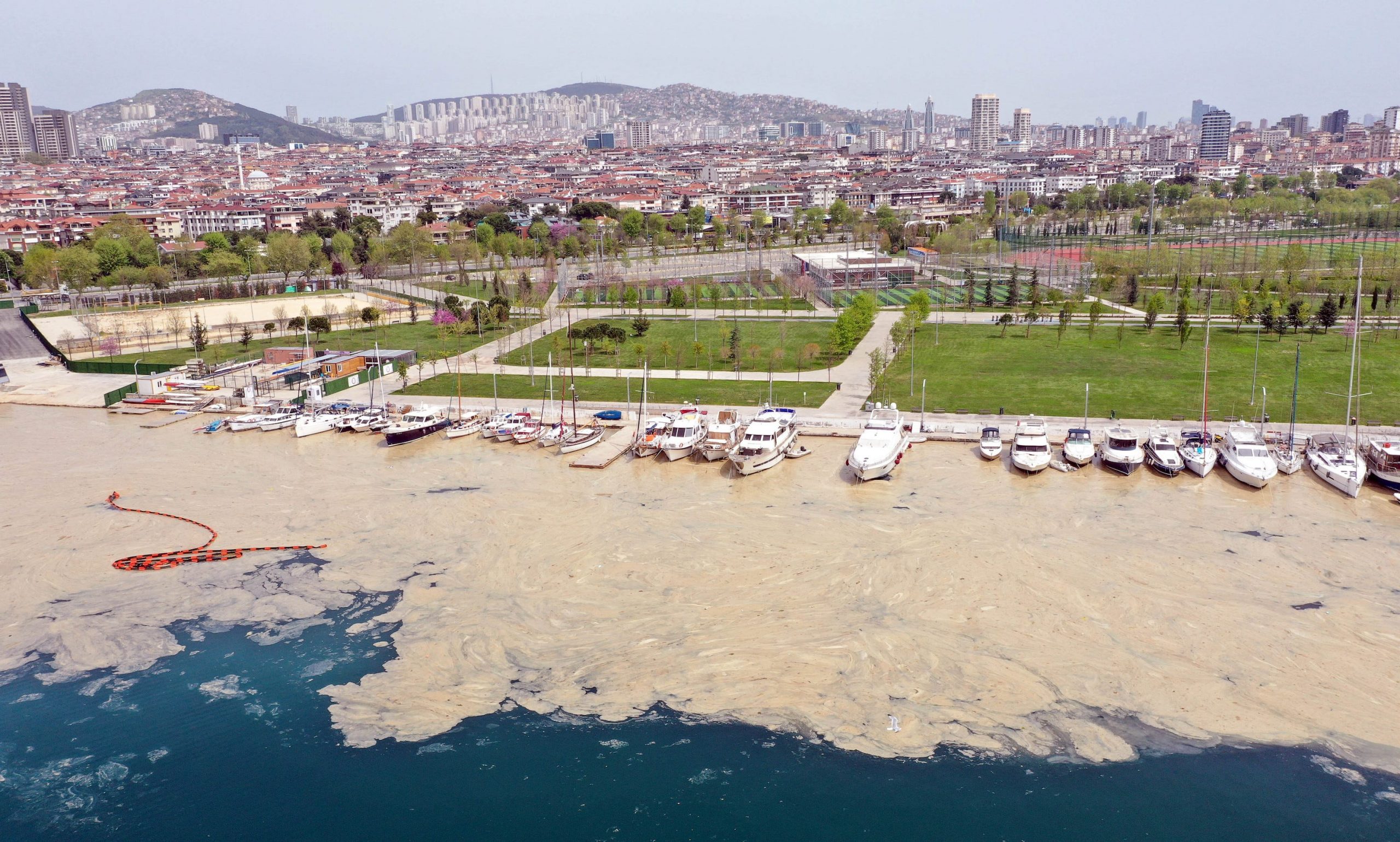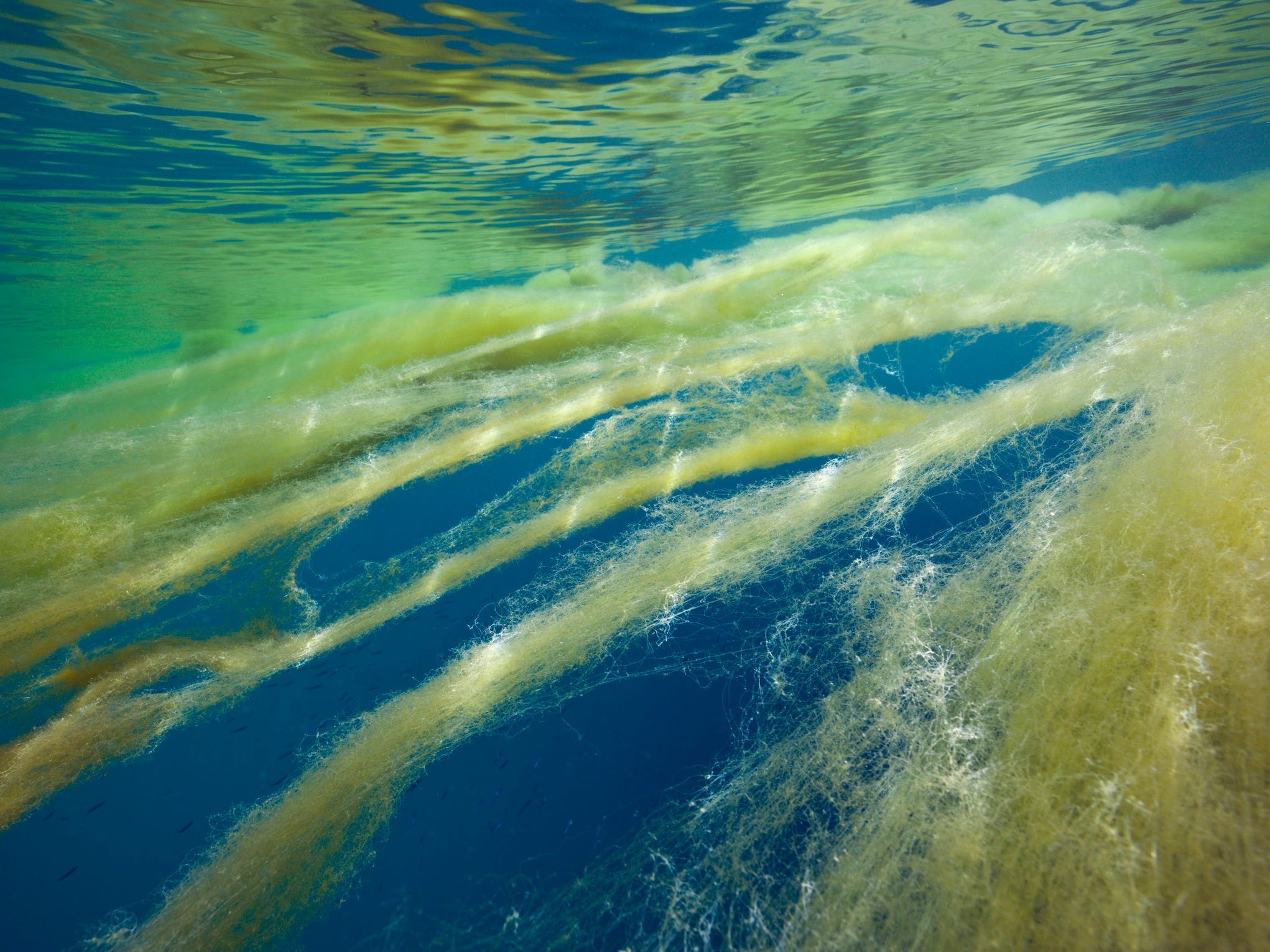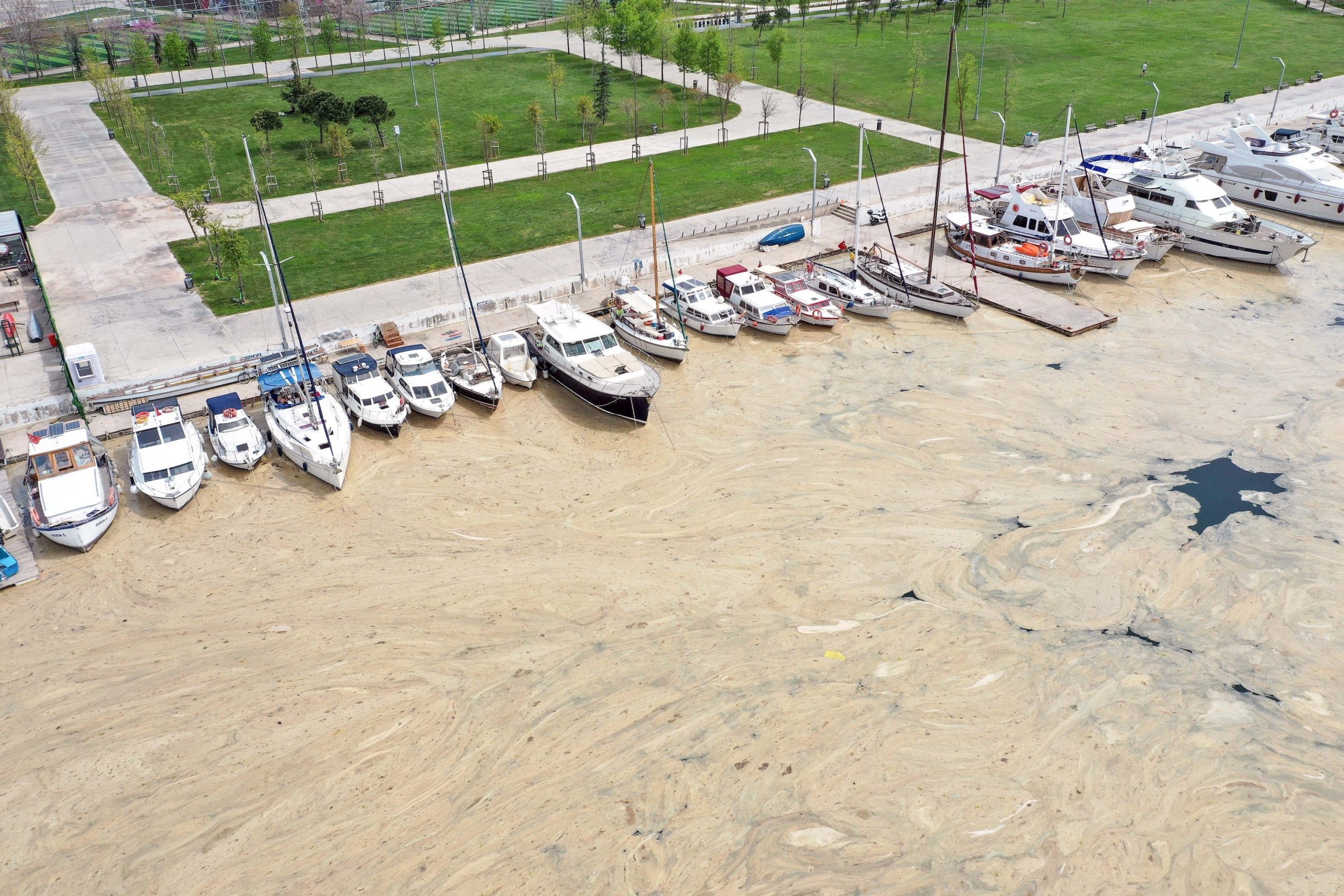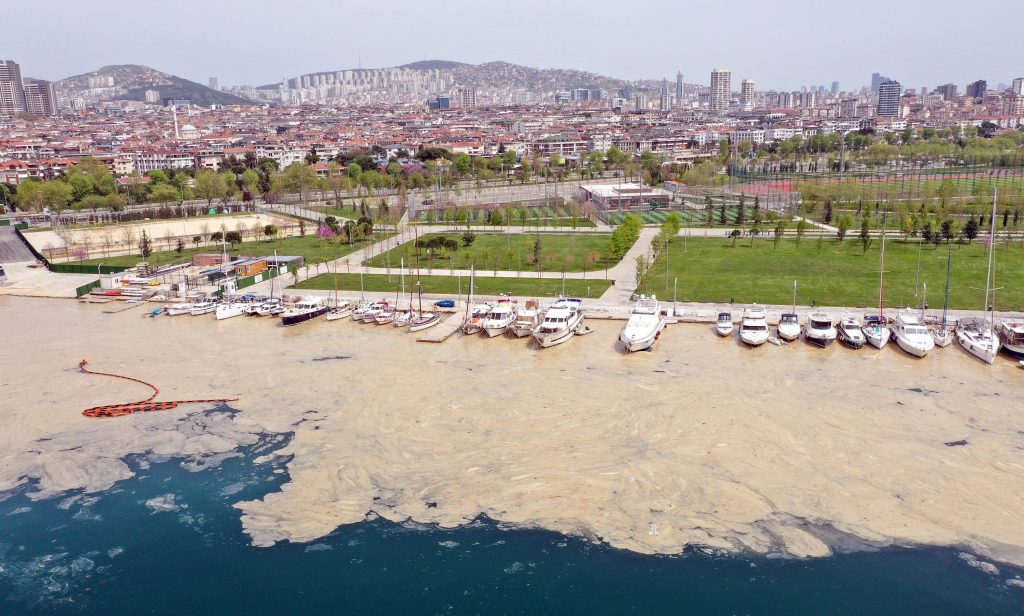
Lokman Akkaya/Anadolu Agency via Getty Images
- A goopy substance called sea snot has been clogging Turkish coasts in the Sea of Marmara for months.
- The mucus has been filling fishing nets, suffocating coral, and killing marine life.
- Climate change and fertilizer runoff may be fueling the algae boom that's behind the sea snot.
- See more stories on Insider's business page.
Blankets of a goopy, camel-colored substance have been accumulating in the water off Turkey's coast for months.
The goop, called marine mucilage or "sea snot," is covering so much of the coastline along the Sea of Marmara that people can no longer fish there. The sea snot formations can get up to 100 feet (30 meters) deep, according to the Turkish news site Cumhuriyet.
The sea snot fills fishing nets and weighs them down – one fisherman told Cumhuriyet that nets have been bursting from the weight of the mucus. A fishery co-op leader said people were barely pulling in a fifth of the fish they hauled at this time last year.
Marine mucilage is a goopy discharge of protein, carbohydrates, and fat from microscopic algae called phytoplankton. The substance was documented in the Sea of Marmara for the first time in 2007, as researchers at Istanbul University reported in 2008.

Prisma Bildagentur/Universal Images Group via Getty Images
Normally, sea snot is not a problem, but when phytoplankton grow out of control, the goop can overpower marine ecosystems. This can wreak ecological havoc, since the substance can harbor bacteria like E Coli and ensnare or suffocate marine life. Eventually, the snot sinks to the sea floor, where it can blanket coral and suffocate them, too.
Since phytoplankton thrive in warm water, scientists suspect that climate change is fueling the new sea-snot crisis. Runoff from nitrogen- and phosphorous-rich fertilizer and sewage could also be causing an explosion in the phytoplankton population.
"We are experiencing the visible effects of climate change, and adaptation requires an overhaul of our habitual practices. We must initiate a full-scale effort to adapt," Mustafa Sarı, dean of Bandırma Onyedi Eylül University's maritime faculty, told The Guardian.

Lokman Akkaya/Anadolu Agency via Getty Images
This is the largest accumulation of sea snot yet, according to The Guardian. It began in deep waters during the winter then spread to the coastlines this year. Barış Özalp, a marine biologist at Çanakkale Onsekiz Mart University, first noticed it in December but became alarmed once the snot carpets continued to grow through the spring.
"The gravity of the situation set in when I dived for measurements in March and discovered severe mortality in corals," he told The Guardian.
Thousands of fish have been washing up dead in coastal towns as well, Sarı told The Guardian. The fish could be suffocating because sea snot clogs their gills, or because it depletes the water's oxygen levels.
"Once the mucilage covers the coasts, it limits the interaction between water and the atmosphere," Sarı said.

